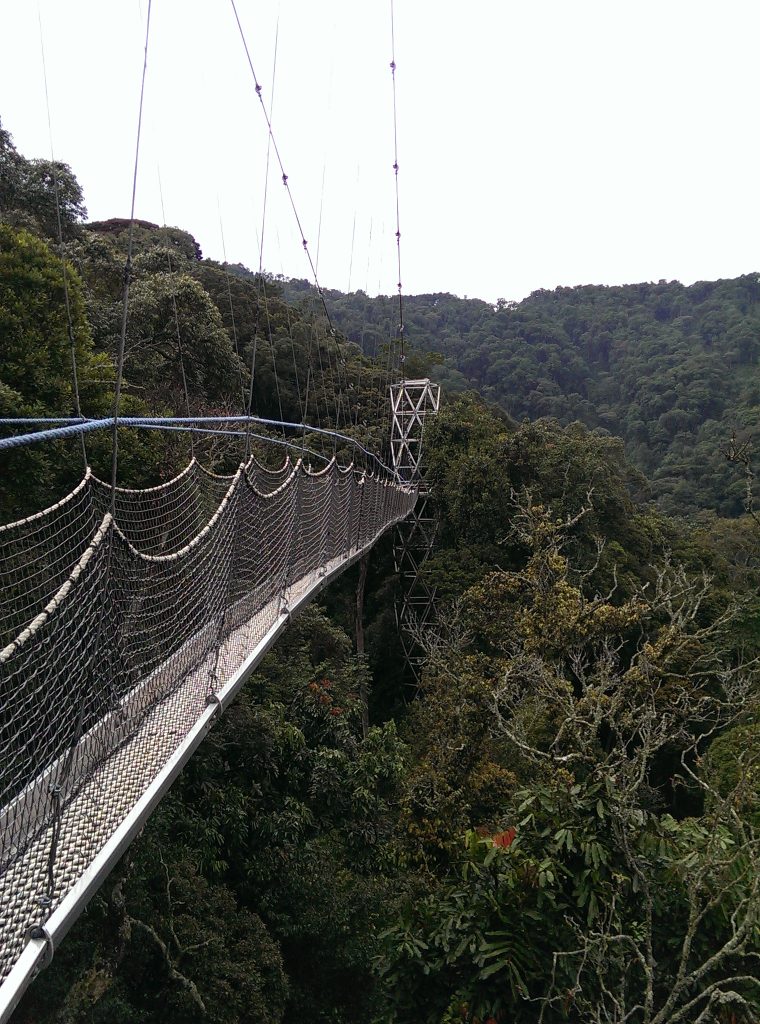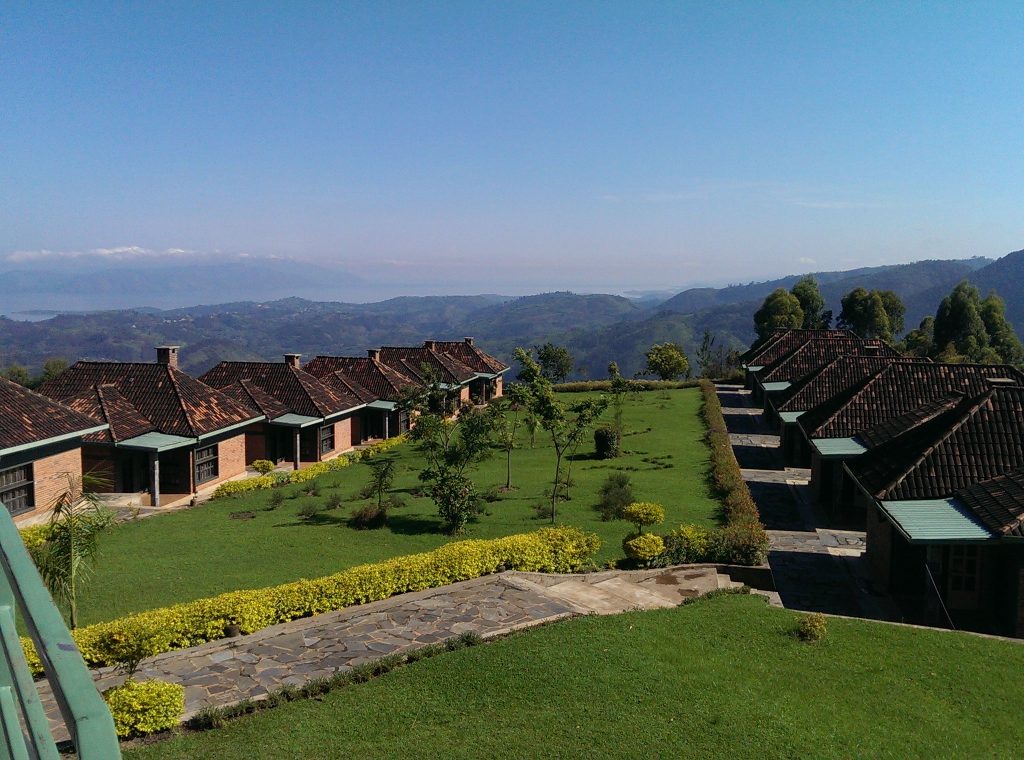Rwanda is criminally underrated as a tourist destination in Africa. Wedged between southern Uganda and western Tanzania, it is often overshadowed by its larger and more accessible neighbors. This is unfortunate for both travelers and the country as it has so much to offer – affordable amenities, safaris (Akagera Park), and Volcanoes National Park, one of only three places in the world where visitors can track the elusive and endangered mountain gorilla. The country is one of the cleanest, safest, and most developed in the region.
Another unforgettable highlight of the country is Nyungwe Forest National Park, set deep in the mountains of the country’s southwest. The park is the largest area of original montane rainforest in all of East Africa. With incredible hiking, canopy walks, and the option to track chimpanzees or other primates, Nyungwe is reason enough to include Rwanda on your itinerary. Plus, Rwanda, Uganda, and Kenya now share the joint East Africa Visa, valid for 90 days, so there is little excuse to pass up the opportunity.
The park encompasses a sizable area in the southwestern region of Rwanda. Getting there from the capital takes anywhere from four to six hours depending on what type of transportation you choose (bus, safari company, or self drive), weather conditions, traffic, and whether you go to the eastern or western entrance of the park.
After climbing and descending numerous mountains on the road to Nyungwe, you’re suddenly enveloped by lush vegetation by mountains on both sides of you, winding your way through the forest at breakneck speeds. The government of Rwanda is currently working on a new highway through the park, so be prepared for gravel roads, lots of speed bumps, and construction through the eastern half of the forest. Whether you’re on a bus or private vehicle, you’ll fight for supremacy on the road as you overtake Congolese truckers and swerve around construction vehicles. Just don’t look over the sides down the sheer drop-offs into the endless jungle.
Activities in the park
There are over a half dozen trails from lasting from an easy two kilometers (1.5 mi) and taking about two hours on the one end and the most difficult trail lasting over six hours at ten kilometers (6 mi). The 42 km (25 mi) Congo-Nile Divide Trail requires a guide and multiple overnights in the forest, is steep and difficult, and should not be taken lightly. Comfortable clothing, long socks, hiking boots, possibly a rain jacket, and a sense of adventure should be taken for each hike as all trails have plenty of ups and downs, can be muddy, and usually hot. However, pristine rainforest, breathtaking views, and the chance to see the forest teeming with unique flora and fauna are to be expected on all.
Ornithologists will rejoice as Nyungwe has over 300 species of birds with 27 Albertine Rift endemics and three that can only be found in the forest. You’re bound to hear and likely see a vast array on any given activity, however, the forest’s thick vegetation can obscure views and it is best to go with a guide on a specific trail as they are expert trackers.
The same can be said for those who come for the main attraction in Nyungwe, chimpanzee and primate tracking. Guides are mandatory, and following the chimps requires an early start which usually departs at 5:30 a.m. The main area for chimp tracking is actually outside the confines of the main park in a smaller area called Cyamundongo Forest. While the chimpanzees move more than the gorillas, you’re almost guaranteed to see the group of 25 or so in Cyamundongo. You’re also likely to see at least one of the ten species of monkey endemic to the area including the common black and white Ruwenzori colobus, L’Hoest’s monkey (known for its red coat and white beard), the silver monkey, and the olive baboon to name a few. If you’ve got a keen eye, you’ll likely spot them on the road passing through the park. There is also a small patch of forest just outside the park on the grounds of the Gisakura Tea Estate which is host to several species.
Besides the obvious attractions, a visit to the Gisakura Tea Estate is a great activity if you’ve never been to a tea plantation. Likewise, having a cup at the Nyungwe Forest Lodge is an excellent way to relax after a day of trekking without shelling out $400 for a room. The Top View Hotel, at the apex of an imposing hill offers spectacular views of the forest and surrounding mountains as well as Lake Kivu and the Congo way off in the distance. Its balcony is an incredible place for a sundowner after a long day. If you’ve got your own vehicle, you can drive to Cyangugu and Kanembe on Lake Kivu, a mere 30 kilometers (20 mi) away. Hire a boat to take you to a few of the islands or have some excellent fish at one of the hotels cum restaurants on the emerald colored Rusizi River, all that separates Rwanda from the DRC on the opposing bank.
Overall, Nyungwe Forest and the surrounding area is one of Rwanda’s star attractions and an excellent way to spend a weekend in the country.
Where to stay and practical considerations
Most of the (scant) accommodation options lie in Gisakura, just outside the western entrance and about 250 kilometers (150 miles) from Kigali in the center of the country. The choices are the ‘budget’ Gisakura Guesthouse ($30/single including breakfast), and the luxury Top View Hotel and Nyungwe Forest Lodge (both costing several hundred US dollars per night). Should you choose one of the latter two options, rest assured you will have an unforgettable experience with spectacular views of the forest and valleys, swimming pools, private en suite bathrooms with hot water (and bathtub), as well as most of the other amenities you would expect for such a price.
At the time of this writing, there was one accommodation option in the eastern section of the park, the KCCEM (Kitabi College of Conservation & Environmental Management) Guesthouse, which at an affordable US$10 per night for a single beats the other options in Gisakura. Call ahead if you plan on staying at the Gisakura Guesthouse or KCCEM, as those two budget options have a tendency to fill up from Kigali day trippers. It is also possible to camp in the park at the Uwinka Campsite in the main reception area (also $30/night), and a backpackers hostel/lodge is currently under construction to help alleviate budget travelers’ aching wallets.
Activities come with a dizzying tiered pricing system for tourists (non-resident foreigners), resident foreigners, members of the East African Community (resident and non), as well as Rwandan nationals, but for the sake of brevity, the following prices will be for tourists and based on the per-day price. Passes for activities can be bought for one day, two to three days, and four to seven days, which also affects pricing. Most hikes fall into the range of $40-50, birding walks and primate tracking is around $70-80, chimpanzee tracking is $100, the canopy walks (suspended high above the forest) cost $60, and the Congo-Nile Divide trail which lasts 3-4 days is $120.
Make sure you get a permit for any of the activities with the Rwanda Development Board (RDB) to secure your place on any hikes or activities, particularly if you are planning on visiting on the weekend. Make sure you pack some warm clothes as it can get cold at night at the higher elevations. Likewise, sturdy shoes, a rain jacket, and a headlamp or small flashlight would be prudent as well. Bring enough cash as the area around Nyungwe is remote and you won’t find ATMs. Rwanda is still a developing country and like many places, things won’t always go as smoothly as expected; be flexible, bring a sense of humor, and when tipping guides, remember, a little goes a long way here.
This article was originally published on October 28, 2014.




